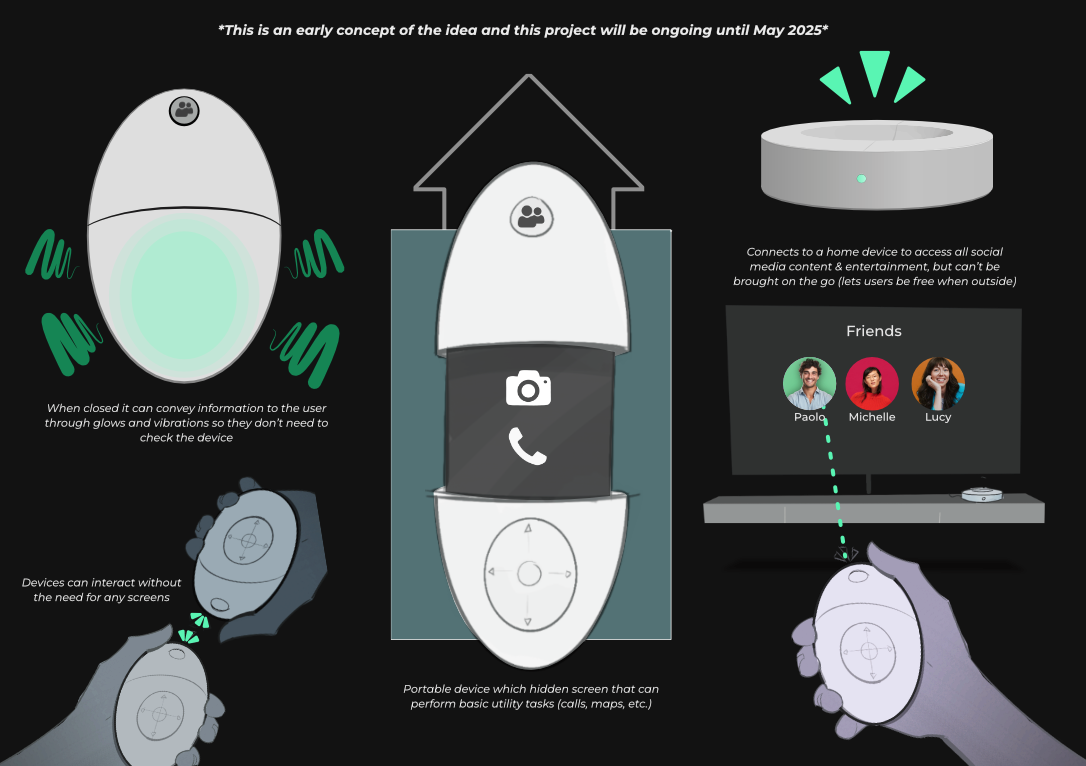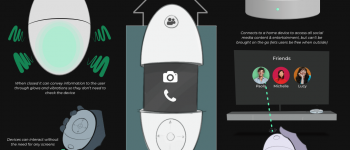This project is currently ongoing and won’t be completed until May 2025.
The goal of this project is to design a new device to replace current smartphones for users who want to disconnect from the online world and enjoy what the real world has to offer, as well as removing the addictive design that is currently plaguing modern devices. It does so by decentralising the device, so it doesn’t have access to all apps at all times to make the user more mindful of how they use it, while maintaining the convenience of modern smart devices.
The user has a portable device that can perform essential functions such as calls, maps, reminders, etc., but cannot access other apps which aren’t a necessity such as social media, youtube, etc. unless it is connected to a peripheral that allows the device to do so. This limits when users can use certain apps, without being able to easily override it.
Decentralising the device makes the device work for the user and provides them with more free time to spend doing the things that gives their life meaning.
It also has impacts on children's learning, as parents over-using devices in the presence of young children can stunt their ability to learn to speak along with other crucial social skills.
I also found that these devices and especially social media platforms are designed to keep the user hooked to push more advertisements on them, which drives further consumerism when matched with online shopping platforms. The average adult user spends 3-4 hours a day on average on their device (outside of work), which accounts for nearly a third of the day they are awake for, reducing the quality of time that could be spent engaging with the world around them.
My approach for solving this problem was engaging with users of all ages on what they like and dislike about using their smart devices. Users outlined a wide variety of data of how they feel about their devices and it made me realise that no one user really uses their device the same to the next. However, it was highlighted to me that users who decentralise their devices (don't have every application available on one device) for work and their personal life perceived to have a much healthier relationship with said devices. They were also frustrated that there is currently no way to further decentralise the devices.
This led me to generating ideas on how to allow users to decentralise their devices to gain focus on what is important to them and have their device be less of a nuisance to them.
Also parents of the future generations who don't want their children to be so reliant on screens in the future.



 Jonah Phelan – Problematic Smartphones – Design for Futures.pdf
Jonah Phelan – Problematic Smartphones – Design for Futures.pdf